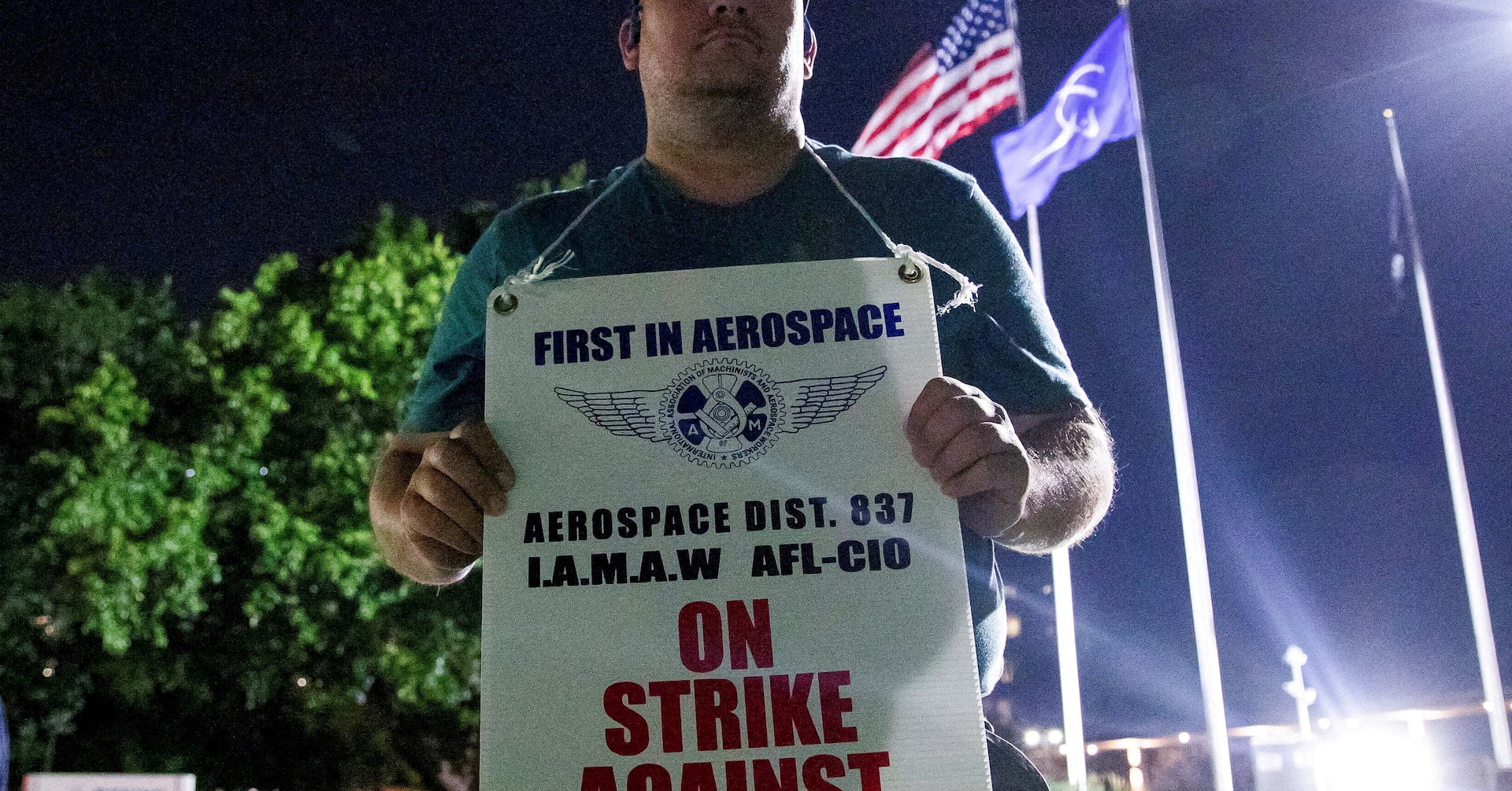As the strike at Boeing’s defense division in St. Louis enters its ninth week, the company continues to experience minimal financial strain. The work stoppage, now lasting 53 days, involves approximately 3,200 machinists represented by the International Association of Machinists and Aerospace Workers (IAM), who walked off the job on August 4. Unlike last year’s strike that disrupted Boeing’s high-volume commercial aircraft production, this labor action primarily affects military programs with slower output or those still undergoing development and testing.
Richard Aboulafia, Managing Director at AeroDynamic Advisory, noted that the current situation poses far less economic risk to Boeing compared to the 2024 walkout. He explained that many components for defense projects, such as fighter jets, have already been funded by the U.S. government, which reduces the financial consequences of halted assembly lines.
“From a monetary standpoint, Boeing isn’t feeling much pressure,” Aboulafia said. “They appear confident they can endure longer than the union, and there’s a real chance they’ll succeed.”
The striking workers are relying on weekly $300 strike benefits from the union, supplemental income from secondary employment, and personal budget adjustments. On September 19, union members approved a contract proposal by a large margin, which was then submitted to Boeing. However, company leadership has maintained its stance against accepting any offer imposed unilaterally.
Negotiations are set to resume Monday with the assistance of a federal mediator, according to union representatives. Meanwhile, Boeing has signaled it may bring in replacement workers, having reviewed hundreds of applications following a recent job fair. A company spokesperson confirmed this possibility but did not disclose how many replacements might be hired.
Despite the ongoing labor dispute, Boeing has continued certain operations. According to spokeswoman Deborah VanNierop, the company delivered one F/A-18 and one F-15 fighter jet during the strike and produced 3,120 JDAM bomb-guidance kits. Flight evaluations for the T-7 trainer aircraft and the MQ-25 unmanned refueling drone are progressing, with the latter advancing from ground-vibration tests into fuel-system assessments.
VanNierop declined to address union claims that no new work is being conducted on core fighter programs. Separately, Michael Fitzsimmons, Boeing’s head of labor relations, is departing to join Ford in a similar capacity. Boeing stated his exit will not disrupt upcoming talks.
Jody Bennett, IAM Resident Vice President, emphasized the human toll of the strike during a recent press event: “This isn’t about games. These jobs support real families. Right now, people are without wages, without health coverage, and without clarity about their future.”
— news from Reuters
— News Original —
Boeing feels little economic pain as strike at defense unit head for ninth week
Sept 26 (Reuters) – A strike by machinists at Boeing Defense in St. Louis reached 53 days on Friday, matching last year’s walkout by fellow International Association of Machinists and Aerospace Workers union members in the Northwest who make most of the company’s commercial jets. n nLast year’s strike ended with substantial concessions from Boeing. n nSign up here. n nThis time around, management has refused to significantly improve upon offers already rejected by the roughly 3,200 machinists on strike since August 4 in the St. Louis area. n nThe union and the company are expected to resume contract negotiations on Monday with the help of a federal mediator, the union said. n nBoeing faces far less economic pressure than it did during the 2024 strike because the current work stoppage largely affects military programs producing at low rates or still in testing rather than the company’s cash-cow 737 jetliner program, AeroDynamic Advisory Managing Director Richard Aboulafia said. n nHe added that the U.S. government has already paid for much of the equipment and components for fighter jets, reducing the financial sting of parts sitting idle during the stoppage. n n“It’s hard to see a pain point for Boeing,” he said. “They’re banking on outlasting the other guy, and they might just get away with it.” n nFor now, members are relying on a mix of $300 a week in strike benefits from the IAM, second jobs, and belt-tightening. The union sent Boeing a contract proposal that members overwhelmingly approved on September 19, according to union officials. Boeing leadership rejected any unilaterally proposed offer, the company told the union. n nThe company has warned it could hire replacement workers and is reviewing hundreds of applications after a job fair held last week, a spokesperson said. n nOperations during the strike: Since the walkout began, Boeing has delivered one F/A-18 and one F-15 and produced 3,120 JDAM bomb-modification kits, Boeing spokeswoman Deborah VanNierop said. n nFlight testing continues on the T-7 trainer and the MQ-25 tanker drone, which has completed ground-vibration testing and moved into fuel testing, she added. VanNierop declined to comment on union claims that no new work is being performed on the fighter programs. n nSeparately, Boeing’s head of labor relations, Michael Fitzsimmons, is leaving to take a similar role at Ford, which announced the move Thursday. His departure will not affect potential negotiations, VanNierop said. n n“We’re not coming in here to play games. We’ve got too many people whose lives count on these jobs,” IAM Resident Vice President Jody Bennett said during a press briefing on Tuesday. “Right now, they’re without pay, they’re without insurance, and they’re without certainty of what’s going to happen in their future moving forward.” n nReporting by Dan Catchpole in Seattle, additional reporting by Shivansh Tiwary; Editing by David Gregorio and Alan Barona
